#19 december 1961
Photo

On this day, 8 June 1961, a group of Freedom Riders were arrested in Jackson, Mississippi, including Kwame Ture, Gwendolyn Greene and Joan Mulholland (pictured, l-r). Freedom Riders fought government non-enforcement of the ban on segregation in public transport in the US South by riding in multiracial groups. They faced intense violence from local police and white supremacists, including the Ku Klux Klan, until eventually winning in December that year. Ture (born Stokely Carmichael) became a central organiser in the Student Nonviolent Coordinating Committee, and later the Black Panther Party. He was targeted by the FBI's COINTELPRO operation, and "bad jacketed" – falsely painted as a CIA agent and expelled from the SNCC. Greene (who later changed her name to Britt) had also been arrested in 1960 for refusing to leave the segregated Glen Echo Amusement Park in Maryland. With others, she confronted counter-protesters from the American Nazi Party and continued picketing until the end of summer. The park then agreed to abolish segregation before reopening the following year. Mulholland, then aged 19, had participated in numerous civil rights sit ins, for which she was disowned by her family. In 1963, she was travelling with four other activists in Mississippi when their car was attacked by the KKK, who had orders to kill them, but they managed to escape. Mulholland remains active to this day. Image from the excellent @ZinnEducationProject More information, sources and map: https://stories.workingclasshistory.com/article/10819/freedom-riders-arrested https://www.facebook.com/photo.php?fbid=640538474786038&set=a.602588028581083&type=3
220 notes
·
View notes
Photo
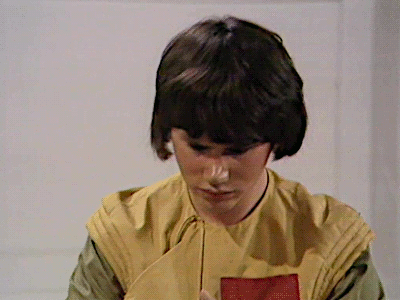

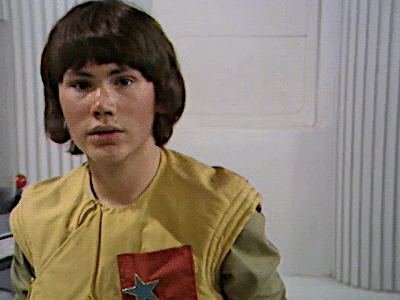
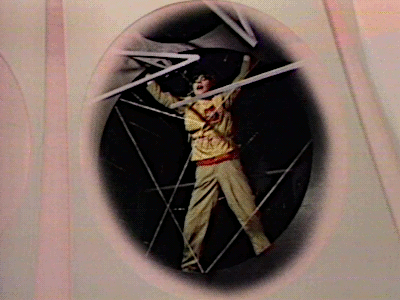






Happy birthday Matthew Waterhouse - 19 December 1961
237 notes
·
View notes
Text
Dedicated to Margarita Pavlovna Korabelnikova(June 19 1931 - December 24 2021)
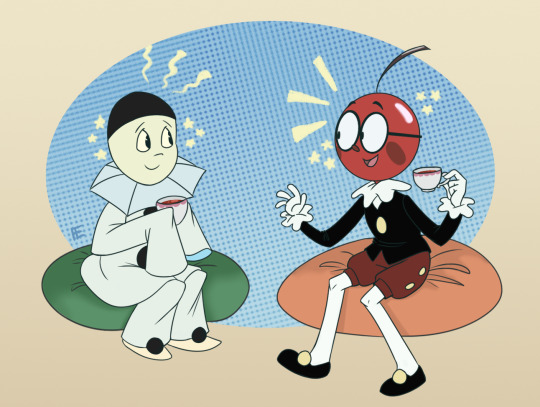
Pierrot from "The adventures of Buratino"(1959) and count Ciliegino(Cherry) from "Cipollino"(1961)
#soviet cartoons#the adventures of buratino#buratino#pierrot#cipollino#soyuzmultfilm#crossover#frau ella#frauella#fan art
60 notes
·
View notes
Text
Secret life of the Beatles and the man who got them groupies and pot
Mal Evans was the Beatles’ fixer, roadie and confidant, but little is known about the man the Fab Four adored. Now a new book reveals all
For eight years, Malcolm “Mal” Evans was, in his way, as fundamental to the Beatles as Brian Epstein and George Martin. He was their long-time roadie and personal assistant, sometime lyricist, occasional performer and regular fixer at the height of the group’s fame and beyond.
Over the years he became friend and confidant — attending their weddings, fending off fans, procuring groupies, accompanying them on holiday, joining them on acid trips, going to India on their infamous pilgrimage to see the Maharishi Mahesh Yogi. But Mal’s dedication to the “boys” and his own desire for stardom took its toll, leading to the end of his marriage and his untimely death in January 1976.
Until now, Mal’s life remained shrouded in mystery. Drawing on hundreds of exclusive interviews and with full access to unpublished archives — including his personal diaries, manuscripts and memorabilia which for 12 years were forgotten in the basement of an American publishing house — this is the first complete portrait of a complicated figure at the heart of the Beatles’ story. Just when you thought there was nothing new to know about the Fab Four, here comes the extraordinary tale of one ordinary man right in the middle of it all.
AT 27, MAL HAD FIVE YEARS on John Lennon and Ringo Starr and even more on Paul McCartney, who had turned 20 in June 1961, and George Harrison, still a teenager at 19. Mal – was the odd man out in more ways than one. He held a real job, as a telecommunications engineer for the General Post Office, and he had a home and a family. With his wife, Lily, he lived in Liverpool’s Allerton district, where they were raising their 15-month-old son, Gary.
It was a simple twist of fate that landed Mal behind the wheel of the band’s Ford Thames van on a January day in 1962. Neil Aspinall, the Beatles’ road manager, had fallen ill with flu. He was hardly the only person felled during that severe winter. During the last week of December, a blizzard swept across England and Wales, leaving snow drifts of up to 20ft in its wake.
By the time Mal and the Beatles began the long drive to London, around midday on Monday, January 21, the van’s brakes had begun to slip. During the early leg of their journey, brakes didn’t really matter. But it was on the journey home that disaster struck in the middle of the night. As Mal drove along a quiet rural road, the windscreen “cracked with a terrible bang”, as he’d write later in his Post Office Engineering Union diary. With the windscreen splintered, Paul observed as Mal “put his hat backwards on his hand, punched the windscreen out completely and drove on”.
Mal was left to contend with the gale-force winds now pummelling the van’s interior. The bandmates gathered up stray caps and scarves and wrapped them about their beleaguered driver, who had pulled a paper bag over his head to battle the cold. “It was perishing,” John later recalled. “Mal had this paper bag over his head with just a big split in it for his eyes. He looked like a bank robber.” Meanwhile, John, Paul, George and Ringo huddled together in the rear of the van, sharing a bottle of whisky while stacked one atop the other to generate much needed warmth. “And when the one on the top got so cold it was like hypothermia was setting in,” Ringo recalled, “it was his turn to get on the bottom, and we’d warm each other up that way, and keep swigging the whisky.” It was, in Paul’s words, “a Beatle sandwich”.
All the while, Mal and the boys maintained a steady banter to stave off exhaustion. As the Big Freeze raged — swirling both inside and outside the van — the Beatles regularly pestered their driver about how much further they had to go. “[Two hundred] miles to go!” Mal would reply, referencing the approximate distance between Liverpool and London. In the years to come, “It became our own private joke, and ‘200 miles to go, Mal’ was heard whenever things were tough.”
DURING HIS YEARS WITH THE BAND, Mal discovered that the best way to avoid being ribbed by the boys was to be ready for virtually anything. To this end, he carried around with him an ever growing doctor’s bag to meet the Beatles’ every possible whim. It was swollen with musical instrument paraphernalia — plectrums, guitar strings and the like — along with household items such as aspirin, chewing gum, a torch, crisps, biscuits, tissues and cigarettes, of course. As the years went by, he had another piece of luggage, which he lovingly called his “dope bag”: a brown suede bag with an om sign prominently displayed, complete with freshly rolled joints.
This began after Bob Dylan dropped by their hotel in New York in 1964 during their first tour of North America. Not long after Dylan’s arrival, the Beatles offered their guest a sample from their motley collection of pills — Drinamyls and Preludin (both uppers), mostly. But Dylan wasn’t having it, instead suggesting “something a little more organic”. At first, Brian Epstein demurred, sensing the Beatles’ apprehension.
That’s when Dylan said, “But what about your song — the one about getting high?” At that, he began singing the middle eight from I Want to Hold Your Hand: “And when I touch you, I get high, I get high.”
John quickly interjected: “Those aren’t the words. It’s ‘I can’t hide, I can’t hide’.”
Ringo tried Dylan’s marijuana first. A few puffs from Dylan’s joint left him smiling and suddenly marvelling at the way the ceiling seemed to float down onto him. Soon, they were all stoned. George recalled that, “We were just legless, aching from laughter.” And for Paul especially, the Beatles’ first brush with the devil weed seemed not only mind-blowing, but a moment of great import. To him, it felt exactly like the kind of experience that should be captured for posterity. Having dutifully provided his roadie with a pencil and paper, Paul ordered him to, “Get it down, Mal, get it down!” Despite being quite stoned in his own right, Mal managed to record the Beatle’s most insightful thoughts. The next morning, Mal retrieved the musings, which boiled down to a single sentence: “There are seven levels,” his notes read. Roadie? Bodyguard? Fixer? Now Mal could add “amanuensis” to his evolving portfolio.
AS EARLY AS 1963, it was clear that there was an unusual zeal among Beatles fans, one unbounded by the conventional social behaviours of the day. “As if attacked by a virus that changed their moral standards, teenage girls wanted sex with the Beatles and they didn’t care how they got it,” wrote Tony Bramwell, Brian Epstein’s assistant. “When they tried to grab a live one, crawl through windows or hide in wardrobes, they were sorted out by Mal and Neil Aspinall like M&Ms, to be sampled and tasted first. Brian — who was puritanical where his protégés were concerned — would have had a fit had he only known, but he was kept totally in the dark.”
At its height, the stage and its environs would take on the look of a battle zone. “Unconscious teenagers were being dragged out of the audience,” Mal wrote, describing a gig in San Francisco in 1965, “and we hauled them on to the stage for safety. Some were in a terrible state, bruised, battered, cut and unconscious. Their clothing was torn and their hair dishevelled. We put them backstage, where the casualties mounted into the hundreds as the show went on. A chain of policemen organised to get them to the first aid centre.” At one critical juncture, a fan hurled a metal folding chair onstage. Eventually, the situation became simply too dangerous for the band to continue. “It’s no good,” Brian was told. “You’ll have to cut the show. Only one more song.”
As the casualties mounted, Mal prepared to usher the Beatles to safety. “Sobbing girls lay slumped against the walls or huddled in the corners,” he wrote, “and I caught a glimpse of Joan Baez trying to revive some of them with smelling salts. Every artist in the show was backstage helping out and trying to get the fainting youngsters back on their feet.”
When the concert mercifully ended, the Beatles dropped their instruments, ran from the stage and climbed into an enclosed freight truck to make their escape. Afterwards, “Pandemonium broke out in the auditorium,” Mal wrote, “and I thought the whole place was going to collapse around us. But somehow, the police managed to keep the tide at bay, all the exit doors were thrown open and people were hustled out. The scene behind them was of devastation, with seats overturned, people still trying to get onto the stage and more people fainting.”
By the next morning, the Beatles and their entourage were winging their way back to London. But the perils of the band’s second North American tour would not be so quickly forgotten. For his part, Brian Epstein would chalk up the chaos and violence to lax security. But it was more than that, Mal realised. He had long felt that there was a dark side to Beatlemania, that not all the attendant hysteria could be understood as the simple byproduct of fandom.
Meanwhile, as the tours mounted up, for Mal the sudden availability of sex, seemingly free from consequences, represented an irresistible bonanza. After a lifetime of self-doubt over body issues and inveterate shyness, he simply couldn’t control himself.
“Big Mal was a demon for sex,” Tony wrote. “His stamina would have been remarkable in a harem. In the flat, sooty back streets of Birmingham or Manchester, he was a stud straight from the Kama Sutra. Like sacrificial virgins, a lot of the girls willingly accepted that they would have to do it with Mal to get to John, Paul, George or Ringo, and Mal knew it.”
Years later, John would liken the Beatles tours to Fellini’s Satyricon, suggesting that their worldbeating jaunts were a fantasia of sexual decadence. Lloyd Ravenscroft, the Australian tour manager, confirmed that the band members “had girls in their room, yes. That was in the hands of Mal Evans, who was very good at picking the right girls. It was very discreet and well organised.”
Mal became “a suave and smooth procurer”, in the words of Larry Kane, a broadcast journalist who was embedded with the band on one of their US tours, “able to spot a target with incredible intuition. It was as though he could pick up on the scent of women who were willing. Only rarely did I see him alone in a hotel corridor. At least his flair for recruiting included an understanding of the difficulties the Beatles could face if any female companion was underage or wronged in any way. If one could get an Oscar for safely procuring women, Mal Evans would have received the lifetime achievement award.”
Back home, Mal’s reunions with Lil and Gary were tempered by the infrequency of his correspondence and by the odd scraps of paper his wife had discovered in his suitcase — addresses and telephone numbers, invariably written in a feminine hand, from the “pen pals” he would meet on the road. Mal brushed off their significance, but Lil knew better. “It used to break my heart,” she recalled.
By 1968 — a year in which he had tried in vain to remake himself as a record executive — Lily’s mistrust of her husband had reached a fever pitch. By this point, she wasn’t just finding “silly groupie letters” in his suitcase, but also the occasional stray pair of knickers and other telltale signs of infidelity. She recognised that Mal was being seduced by overwhelming forces, impulses with which she could hardly begin to compete. “One minute he would be in Hollywood,” she said. “The next day he’d be back here cleaning out the rabbit hutch.”
Mal had emerged as a celebrity in his own right, thanks to publications such as The Beatles Book. “It was OK for him,” Neil Aspinall recalled, “going out in front getting the instruments ready. Dead popular he was. As they cheered and shouted at him he talked to them and made jokes. He didn’t have to physically fight them off, once it started.”
All shook up: the Fab Four meet Elvis
ON THE NIGHT OF AUGUST 27, 1965, Mal and the boys met Elvis Presley at the King’s Bel Air mansion. The 30-year-old superstar was in town to shoot the film Paradise, Hawaiian Style.
Prior to his coveted meeting with the King, Mal spent time with Colonel Tom Parker at his Paramount Studios office, where the roadie was lavished with gifts, including a gold-plated cigarette lighter and, to his glee, a white bathrobe emblazoned with “Girls! Girls! Girls!”. Mal not only appreciated Parker’s generosity, but recognised that he possessed “one of the most astute showbiz brains in America”, adding that, “He has wrung every dollar he can out of the Elvis situation — and who can blame him?”
As Mal was lounging in the Colonel’s office that day, the telephone rang. “That was a news agency, Mal,” Parker said. “It looks as though word has got out about Elvis and the boys meeting tonight. There’s a story in the London Daily Mirror. Now Reuters wants confirmation.” At that moment, Mal’s heart froze. “For a moment, I thought Parker was going to call the whole thing off.”
But the Colonel wasn’t to be deterred. With the so-called Memphis Mafia — a group of Presley friends and employees who served and protected the King — at his beck and call, Elvis’s manager instigated a complex system by which they changed vehicles several times before arriving at Benedict Canyon. As the Colonel looked on, Mal, Neil Aspinall, the Beatles’ press agent Tony Barrow and the Beatles ducked into a black limo. “For once,” Mal later quipped, “John, George, Paul and Ringo were ready to leave on time, and they climbed into the waiting cars at the bungalow bang on the dot.” Shouting, “Roll ’em!” out of his car window, the Colonel’s vehicle snaked its way through Hollywood, the convoy followed by a police motorcycle unit. By 10pm, the motorcade had arrived at Elvis’s house at Perugia Way. Incredibly, the Colonel’s plan had worked.
Mal was beside himself, feeling a combination of reverence and utter shock. After being served a large Scotch and Coke by one of the King’s minions, Paul beckoned Mal to meet his idol in the flesh. “Presley turned, and we shook hands. ‘This is your number-one fan, El,’ said Paul. ‘And he’s with us.’” Mal was thunderstruck by the sound of the King’s “strangely quiet voice” as he said, “Sure pleased to meet you,” to the roadie.
As the evening progressed, Mal marvelled at Elvis’s luxurious home, with its well-stocked cocktail bar and lounge, its thickly carpeted rooms, and, in the den, a massive fireplace with a copper chimney disappearing into the ceiling at the centre of the room. “Pretty soon the record player was working full blast,” Mal wrote. “Elvis played a whole lot of albums, many of them the Beatles, but modestly, perhaps, did not play any of his own. The noise was terrific, the drinks were flowing, the talk was animated, and, as I say, it was just like being at home with the lads from Liverpool.”
Eventually, Elvis picked up a bass guitar that was plugged into an amp positioned near the television set. “He began to strum away on the thing, playing quite ably, but he insisted that he was only learning,” Mal wrote. “Keep practising, fella. You’ll get to the top yet,” Paul quipped. As Mal looked on, “the most fantastic impromptu unrecorded session of all time” ensued when “El found some guitars for John, George and Paul and a set of bongo drums for Ringo, and they began to make the place rock with an hour of improvised beat music. It was fabulous.”
“There was only one hitch during the little concert the boys put on,” Mal later reflected. Nobody had a plectrum. “Mal’s got a pick,” said Paul. “He’s always got picks. He carries them on holidays with him.” Crestfallen that he had neglected to bring his well-travelled doctor’s bag, along with its ready supply of guitar picks, Mal scurried to the kitchen, where he fashioned pieces of plastic cutlery into makeshift plectrums.
Ringo and Mal tried their hand at pool, losing four straight games to members of the Memphis Mafia, while, “John lost $9 at roulette with Colonel Parker and Brian Epstein, who had joined us on getting back from New York.” In one of Mal’s favourite memories of that night, John pretended to be a reporter.
“Once, when I was talking to El, sitting on a settee, John came screaming up to us and jabbed an imaginary microphone under El’s nose and began to fire off a string of meaningless questions — which I must say were a pretty accurate take-off of some of the daft things that interviewers ask at our own press conferences. ‘What are you going to do when the bubble bursts, Elvis?’ he asked. ‘What toothpaste do you use? What time do you go to bed? Do you like girls? Who’s your favourite artist?’ ‘Yeah, yeah,’ chuckled El. ‘I’ve heard ’em all before.’”
Escaping from guns and a mob in Manila
ON THE MORNING OF JULY 3, 1966, the Beatles and their entourage left for the Philippines by way of Hong Kong. “Manila was our next port of call on our way back to England,” Mal later remembered, “and it was here, for the first time in my life, I was to experience real fear.” As it turned out, things were cockeyed from the outset. After attending their usual post-arrival press conference, John, Paul, George and Ringo were hustled out of a rear entrance and taken to the harbour, where they were ushered aboard a motor yacht.
“It was really humid, it was Mosquito City,” George reported, “and we were all sweating and frightened. For the first time ever in our Beatle existence, we were cut off from Neil, Mal and Brian Epstein. There was not one of them around, and not only that, but we had a whole row of cops with guns lining the deck around this cabin that we were in on the boat. We were really gloomy, very brought down by the whole thing.”
Things would get worse. After Brian succeeded in securing the Beatles’ return to the mainland, they ensconced themselves in the opulent Manila Hotel for the night. What the members of the band’s entourage didn’t know was that the Beatles had received an invitation from Philippine president Ferdinand Marcos and First Lady Imelda Marcos requesting their appearance at Malacanang Palace at 11 o’clock the next morning. Only, Brian and the Beatles never laid eyes on it. After an incident in America, at the British embassy in Washington, in February 1964, when the band felt they had been snubbed by upper class, titled guests, official requests for the Beatles’ presence were routinely ignored. Instead, the group went about their business in Manila, performing the first of two shows for 35,000 spectators at José Rizal Memorial Stadium and another audience of 50,000 later that same day.
For the moment, the band and their entourage hadn’t felt any blowback from having snubbed the First Lady, save for scathing news reports on Filipino TV. That night, the promoter arranged for a lavish party at the hotel, with numerous prostitutes on hand to cater to the boys’ needs. On the morning of July 5, Mal began to sense trouble when a pistolpacking member of the promoter’s staff requested autographed pictures of the Beatles. “I was in the middle of explaining that I had given away most of the photographs,” Mal wrote, “keeping a few for the plane crew on the way home, when I was cut short by the same gentleman brandishing a gun in my face and repeating the demand. I couldn’t give them to him fast enough. This was the prelude to a morning of terror.”
Mal could feel the tension rising as he sought out a truck to transport the luggage and gear to the airport. “The feeling in the air was that nobody wanted to be associated with us,” he wrote. “On arriving at the airport, I was informed by the police on duty that I couldn’t park near the airline gate, but in the normal parking area like ordinary people. Their attitude being, ‘Who do you think you are?’” When the band and their entourage arrived at the airport, Mal discovered that no one would help them, save for the KLM airline attendants, who processed their baggage.
Everything went to hell when they began making their way to the international lounge, only to be intercepted by a dozen Filipinos. “It was obvious that they were looking to cause trouble, and quite prepared to beat the hell out of us, because of the fiasco the previous evening with the First Lady,” Mal wrote. “They were standing on our toes, jabbing us with elbows, generally giving us a bad time, and the last thing we could do was hit back. Up to that point, they were just a nuisance and making us feel very uncomfortable. I would give my right arm for any of those boys, but under these circumstances, it was most inadvisable to retaliate in any way whatsoever.”
It was chauffeur Alf Bicknell who could no longer contain himself. Daring to strike back at the assailants, he was viciously attacked, ending up flat on the airport floor with a pair of cracked ribs. Despite his large size, Mal sustained numerous blows, as did Ringo, who was knocked down with a swift uppercut and crawled away as assailants kicked him. Things seemed to get worse as the group approached customs, where John and George were punched and kicked. Paul managed to avoid the brunt of the violence by sprinting ahead. Along with Alf, Brian suffered the most, sustaining a sprained ankle during the mêlée. At one point, Mal realised he was bleeding from his leg.
Mal would never forget the surrealness of walking across the tarmac after the violence they had experienced in the terminal. The ruffians were still in evidence, hurling insults and epithets as the Brits made their way to the waiting KLM plane. But the fans were there too, shouting, “We love you, Beatles!” and tossing bouquets of flowers at their feet.
Once on board the plane, Mal wrote, “We all gave a sigh of relief, thinking we were safe on neutral territory. We were all shaking, beads of fear running down our faces.” That’s when immigration officials boarded the plane, demanding that Mal and Tony Bramwell follow them back to the terminal.
In the immigration office, they found themselves once again at the whimsy of the mob, being jostled, pushed and shoved as officials demanded they fill out new immigration forms. As TV crews recorded their every move, the two struggled to complete the forms, their hands visibly shaking in terror. And then, just like that, they were being led back to the plane, once again experiencing a strange gauntlet of violence and insults on the one hand and the goodwill of the assembled Beatles fans on the other. After some 40 intense minutes away from their friends, Mal and Tony were back in their seats. “The last words we heard before the doors closed were, ‘We love you, Beatles,’” Mal wrote.
Mal Evans died on January 4, 1976. He was shot by the police in a California apartment as he brandished a rifle, having taken a suspected Valium overdose. His diaries and memorabilia lay on the floor next to him.
Extracted from Living the Beatles Legend by Kenneth Womack (Mudlark, £25), published on November 14.
(source)
28 notes
·
View notes
Photo

Nina Simone with Babatunde Olatunji arriving at the Lagos Airport from New York, December 14, 1961, for the AMSAC Arts Festival on December 18 and 19, 1961 [Langston Hughes papers, Series XII: Photographs, 1862-1967, Yale University Library, Beinecke Rare Book and Manuscript Library, New Haven, CT]
#music#photography#festival#nina simone#babatunde olatunji#american society of african culture#amsac#langston hughes papers#yale university library#beinecke rare book and manuscript library#1960s
90 notes
·
View notes
Photo

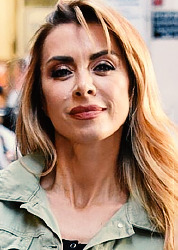
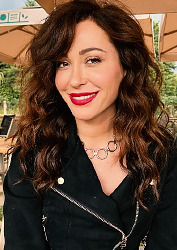



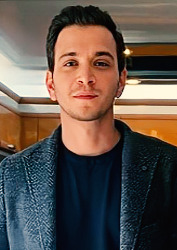


SIMAY BARLAS FAMILY TEMPLATE
from top left → bottom right
father/uncle: mehmet aslantug ( september 25, 1961 )
mother/aunt: neslihan yeldan ( february 25, 1969 )
mother/aunt: evrim dogan ( september 5, 1977 )
brother/cousin: ilhan sen ( december 19, 1987 )
simay barlas ( may 5, 1998 )
sister/cousin: hazal filiz kucukkose ( february 9, 1988 )
brother/cousin: selahattin pasali ( february 2, 1990 )
brother/cousin: ali gozusirin ( january 17, 1995 )
sister/cousin: biran damla yilmaz ( june 28, 1997 )
#simay barlas#simay barlas family template#family template#rph#mehmet aslantug#neslihan yeldan#evrim dogan#ilhan sen#hazal filiz kucukkose#selahattin pasali#ali gozusirin#biran damla yilmaz
73 notes
·
View notes
Text
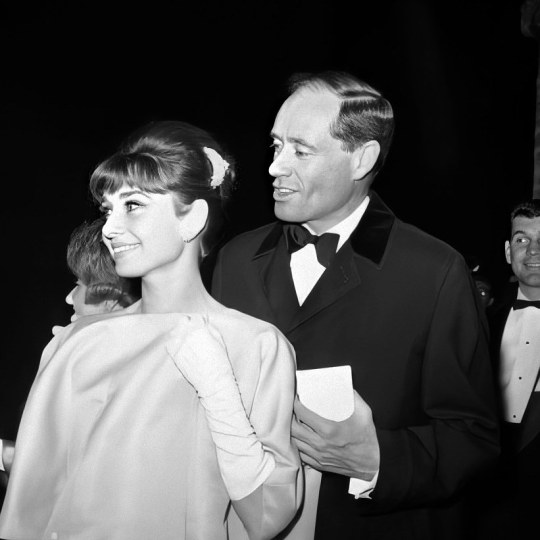


Rightmost is a photo of a slide of Audrey Hepburn's photo during the premiere of The Children's Hour on December 19, 1961 at the Fox Wilshire Theater. This photograph was taken by John Verzi, who was known as Los Angeles's "most bizarre celebrity photographer."
The first two photos are for reference.
John Verzi collected a massive number of autographs and photographs of famous celebrities, disappeared, and "ended up in a trailer park in Vegas, watching soap operas in the afternoon, playing casino slots at night, losing and winning in stretches, driving home in the ghost hours in a three-cylinder car his neighbor fixed from time to time."
He has a very fascinating and interesting story. Read about it on The LA Times.
#audrey hepburn#vintage#classic#style#photography#fashion#old hollywood#old hollywood glamour#the children's hour#1961#1960s#john verzi
19 notes
·
View notes
Text
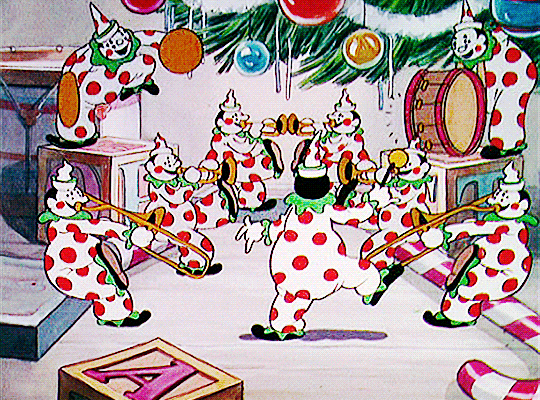
At The Christmas Ball: A Vintage Xmas Anthology
01 - At The Christmas Ball - Bessie Smith (1925)
02 - Santa Claus, Bring My Man Back To Me - Ozie Ware (1928)
03 - Papa Ain't No Santa Claus - Butterbeans & Susie (1930)
04 - It's Winter Again - Isham Jones & His Orchestra (1932)
05 - Jingle Bells - Benny Goodman & His Orchestra (1935)
06 - There's Frost On The Moon - Artie Shaw & His Strings (1936)
07 - I've Got My Love To Keep Me Warm - Mildred Bailey (1937)
08 - Christmas Morning The Rum Had Me Yawning - Lord Beginner (1939)
09 - Winter Weather - Fats Waller & His Rhythm (1941)
10 - Santa Claus Is Coming To Town - Bing Crosby & The Andrews Sisters (1943)
11 - Have Yourself A Merry Little Christmas - Judy Garland (1944)
12 - Let It Snow! Let It Snow! Let It Snow! - Connee Boswell (1945)
13 - Boogie Woogie Santa Claus - Mabel Scott (1948)
14 - Baby, It's Cold Outside - Pearl Bailey & Hot Lips Page (1949)
15 - All I Want For Christmas - Nat King Cole Trio (1949)
16 - What Are You Doing New Year's Eve? - The Orioles (1949)
17 - Midnight Sleighride - Sauter-Finegan Orchestra (1952)
18 - Silent Night - Dinah Washington (1953)
19 - White Christmas - The Drifters (1954)
20 - Rudolph The Red-Nosed Reindeer - The Cadillacs (1956)
21 - Warm December - Julie London (1956)
22 - Love Turns Winter To Spring - June Christy (1957)
23 - The Secret Of Christmas - Ella Fitzgerald (1959)
24 - The Christmas Song - Carmen McRae (1961)
25 - A Christmas Surprise - Lena Horne (1965)
26 - Santa Was Here - Lorez Alexandria (1968)
Download: flac / mp3
9 notes
·
View notes
Photo

Character Actress
Vivi Janiss (born Vivian Audrey Jamison; May 29, 1911 – September 7, 1988) Film and television actress.
From 1952 to 1955, Janiss appeared in five episodes of Jack Webb's original version of the Dragnet police drama television series. From 1953 to 1957, she was cast in four episodes of the Schlitz Playhouse of Stars anthology series. From 1954 to 1959, Janiss appeared as Myrtle Davis in 11 episodes of Robert Young's Father Knows Best situation comedy series. From 1959 to 1962, she was cast in six episodes, none in the starring role, of the NBC Western series Wagon Train with Ward Bond and John McIntire.
In 1955, she played the historical Mary Todd Lincoln in "How Chance Made Lincoln President" in the anthology series TV Reader's Digest.
In 1957, Janiss joined Frank Ferguson as guest stars in the roles of Mabel and Frank Cliff in the episode "No Blaze of Glory" of Rod Cameron's syndicated series State Trooper. In 1959, Janiss was cast the role of Ella Westover in a second State Trooper episode, "Excitement at Milltown”. On December 4, 1959, Janiss was cast in the CBS anthology series Westinghouse Desilu Playhouse, hosted by Desi Arnaz in the episode "The Hanging Judge".
In its first season on the air, Janiss was cast with Everett Sloane in Rod Serling's The Twilight Zone episode "The Fever". Then on October 7, 1960, cast as Edna Castle, she joined Luther Adler in the role of her husband, pawnbroker Arthur Castle, in "The Man in the Bottle" episode of The Twilight Zone. Years later in 1977, Janiss played a minor role as a pawnshop proprietor in the episode "Second Chance" of James Garner's NBC detective series The Rockford Files.
Janiss appeared in many other series, too, three times on The F.B.I., starring Efrem Zimbalist Jr., and twice each on The Virginian and Ben Casey. She was cast once on Dick Powell's Zane Grey Theater, Lawman, Trackdown, Cimarron City, Route 66, Have Gun – Will Travel, Follow the Sun, Hennesey, Outlaws, Laramie, 87th Precinct, Perry Mason, Mannix, and The Streets of San Francisco.
After she and Bob Cummings divorced, Janiss wed actor John Larch. The couple appeared together on four television series, including the series premiere, "No Fat Cops", on October 3, 1961, of ABC's The New Breed, starring Leslie Nielsen. In this episode, Larch and Janiss were cast as John and Mary Clark. Earlier, the two had co-starred on November 23, 1959, as Johnny and Elsie in the episode "End of an Era" of NBC's Western series, Tales of Wells Fargo, starring Dale Robertson, and on May 23, 1960, as Isaiah and Rebecca Macabee in the episode "The Proud Earth" of the half-hour NBC anthology series Goodyear Theatre. On November 9, 1960, Larch and Janiss appeared as Ben and Sarah Harness in the episode "The Cathy Eckhart Story" of Wagon Train, with Susan Oliver in the starring role. Later, on December 19, 1968, the couple appeared again together in the 10th episode "Yesterday Died and Tomorrow Won't Be Born" of Jack Lord's CBS crime drama Hawaii Five-O.
Janiss' last roles were in the 1978 CBS television film First, You Cry, a story about breast cancer starring Mary Tyler Moore, and in two 1979 CBS series appearances on Barnaby Jones with Buddy Ebsen and House Calls, starring Wayne Rogers. (Wikipedia)
7 notes
·
View notes
Text
Birthday's The Frighteners

Trini Alvarado (January 10, 1967)
Troy Evans (February 16, 1948)
John Astin (March 30, 1930)
Michael J Fox (June 9, 1961)
Jake Busey (June 15, 1971)
The Frighteners (July 17/19, 1996)
Peter Dobson (July 19, 1964)
Julianna McCarthy (August 17, 1929)
Jeffrey Combs (September 9, 1954)
Chi Mcbride (September 23, 1961)
Peter Jackson (October 31, 1961)
Dee Wallace (December 14, 1948)
#the frighteners#trini alvarado#troy evans#john astin#michael j fox#jake busey#peter dobson#julianna McCarthy#jeffrey combs#chi mcbride#peter jackson#dee wallace
10 notes
·
View notes
Text
Birthdays (bc I can)
I put my own fancasts and my headcannon b-day'
Euphemia Braithewaite-Potter - January 4, 1907
Walburga Irma-Black - April 17, 1907
Fleamont Potter - May 15, 1909
Charlus Potter (Monty' brother) - August 19, 1900
Lucretia Black (Orion' sister) - August 3, 1914
Orion Black - September 30, 1920
Druella Rosier (Axel' sister) - December 31, 1928
Axel Rosier (Rosier twins dad) - November 14, 1930
Cygnus Black (Black sisters dad) - July 30, 1938
Adele Jacob-Rosier (Rosier twins mom) - June 7, 1938
Alphard Black - June 26, 1925
Rodolphus Lestrange - October 19, 1952
Rabastan Lestrange- September 21, 1954
Lucius Malfoy - July 1, 1954
Enid Pettigrew (Peter' sister) - January 30, 1962
Mason McKinnon (Marlene' brother) - December 20, 1952
Mitchell McKinnon (Marlene' brother) - June 25, 1955
Matthew McKinnon (Marlene' brother) - November 7, 1958
Maxwell McKinnon (Marlene' brother) - February 29, 1962
Petunia Evans-Dursley - January 10, 1958
Mavan Rosier (Rosier twins brother) - March 14, 1965
Annabella Rosier (Rosier twins sister) - April 16, 1968
Elizabeth Meadows (Dorcas' sister) - May 1, 1965
Fabian Prewett - September 30, 1958
Gideon Prewett - September 30, 1958
Molly Prewett-Weasley - October 30, 1949
Billius Weasley (Arthur' brother) - May 26, 1952
Arthur Weasley - February 6, 1950
James Potter - March 27, 1960
Remus Lupin - March 10, 1960
Sirius Black - November 3, 1960
Peter Pettigrew - August 31, 1960
Lily Evans-Potter - January 30, 1960
Mary Macdonald - September 16, 1959
Marlene McKinnon - August 1, 1960
Dorcas Meadows - April 2, 1960
Bartemius Crouch Jr. - July 9, 1961
Evan Rosier - June 20, 1961
Pandora Rosier - June 20, 1961
Regulus Black - December 31, 1961
Alice Fortescue-Longbottom - August 14, 1960
Frank Longbottom - September 14, 1959
Ted Tonks - March 20, 1953
Emmeline Vance - July 18, 1957
Rita Skeeter - December 19, 1951
Ophelia Zabini - January 15, 1951
Emma Vanity - February 28, 1960
Andromeda Black - October 10, 1953
Narcissa Black - July 19, 1955
Bellatrix Black - May 2, 1991
Tom Riddle Jr. - February 19, 1979
Mattheo Riddle - January 20, 1980
Aliana Riddle - January 20, 1980
Mandy Lestrange - March 13, 1985
Cara Lestrange - May 23, 1986
Delphini Riddle - August 16, 1987
Lorenzo Berkshire - December 17, 1996
Nymphadora Tonks - October 8, 1973
Nina Tonks (Nymphadora' sister) - June 13, 1978
Lucas Rosier (Rosekiller child) - July 21, 1985
Nicholas Rosier (Rosekiller child) - July 1, 1987
Draco Malfoy - June 5, 1980
Lila Malfoy (Draco' sister) - June 5, 1980
Artemis McKinnon (Dorlene child) - September 13, 1981
Aries McKinnon (Dorlene child) - October 17, 1982
Jack McKinnon (Dorlene child) - January 23, 1987
Harry Potter - July 31, 1980
Lillian Potter (Harry' sister) - July 31, 1980
Rose Potter (Harry' sister) - May 24, 1981
Leo Potter (Harry' brother) - February 16, 1983
Pansy Parkinson - August 1, 1980
Blaise Zabini - November 1, 1980
Teddy Lupin - April 11, 1985
Neville Longbottom - July 30, 1980
Juliana Longbottom (Neville' sister) - October 15, 1986
Nicky Longbottom (Neville' brother) - October 15, 1986
Penelope Vance (Emmary child) - November 12, 1988
Hermione Granger - September 19, 1980
Violet Granger (Hermione' sister) - May 14, 1979
Bill Weasley - November 29, 1970
Charlie Weasley - December 12, 1972
Percy Weasley - August 22, 1976
Fred Weasley - April 1, 1978
George Weasley - April 1, 1978
Ron Weasley - March 1, 1980
Ginevra Weasley - August 11, 1981
Luna Lovegood - February 13, 1981
Eclipse Rosier (Pandalily child or Luna' sister) - January 11, 1985
4 notes
·
View notes
Video
Cicely Tyson Quote | Black Girls Living Well
"I have learned not to allow rejection to move me." - Cicely Tyson
Cicely Tyson (1924-2021) was an acclaimed American actress and fashion model. She was born on December 19, 1924, in New York City, USA. Tyson's career spanned over seven decades, and she is recognized as one of the most respected and influential figures in the entertainment industry.
Tyson began her career as a fashion model in the 1950s, but her true passion lay in acting. In 1961, she made her breakthrough in theater with a role in the off-Broadway production of "The Blacks." Her performance garnered critical acclaim and marked the beginning of her illustrious acting career. In recognition of her remarkable contributions, Cicely Tyson received numerous awards and honors, including the Presidential Medal of Freedom in 2016 and an honorary Academy Award in 2018. She continued to work well into her 90s, solidifying her legacy as an iconic figure in film, television, and theater.
Cicely Tyson passed away on January 28, 2021, leaving behind a lasting legacy as a trailblazer, a consummate artist, and a champion for diversity and representation in the entertainment industry.
#QUOTE#quotes#quotes about life#quotes of tiktok#cicely tyson#Cicely Tyson quotes#black women quotes#black woman quotes#black women#black woman#black twitter#black tiktok#black tumblr#black girl magic#black girls rock#black girls living well#famous black women quotes#african american women
7 notes
·
View notes
Text
Bangor receives city status in Princess Anne visit
By Mark Simpson | Published 2 December 2022
Bangor in County Down has formally received city status in a ceremony attended by the Princess Royal.
The ceremony took place at Bangor Castle with Princess Anne unveiling the city's official warrant.
City status was granted by Queen Elizabeth II to mark her platinum jubilee, three months before her death in September.
Bangor is now one of six cities in Northern Ireland, along with Belfast, Londonderry, Armagh, Lisburn and Newry.
Princess Anne said it was "always a pleasure" to visit Bangor, reminiscing on her previous trips in 2013 and 2016.

She spoke about Bangor's historical importance as a centre of learning, noting its appearance on the medieval Hereford Mappa Mundi as "civitas benair" (city of Bangor).
"I can only apologise for taking so long to make sure that in fact you are now properly a city in 2022," she said.
The princess praised recent investment in the area, adding that she hoped city-status "provides a real boost to these exciting plans".
Northern Ireland Secretary Chris Heaton-Harris was also at the event, which was hosted by Ards and North Down Mayor Karen Douglas.
Mr Heaton-Harris said he hoped city-status would attract visitors and boost the economy.

Bangor was one of eight UK towns elevated to a city in May after a competition in which it was required to show its royal associations and cultural heritage.
Its application pointed out that in 1961 the Queen and Duke of Edinburgh visited Bangor Castle and had lunch at the Royal Ulster Yacht Club, before the duke raced in a regatta.
City status is often associated with having a cathedral, a university, or a large population.
However, there are no set rules for being granted the status, which is awarded by the monarch on advice of ministers.
Twenty years ago, Lisburn and Newry were awarded city status in a competition to mark the Queen's golden jubilee.

In the 2011 census the population of Bangor was just over 60,000.
It is situated beside the coast, at the mouth of Belfast Lough.
A number of famous faces come from Bangor, including the lead singer of Snow Patrol, Gary Lightbody, author Colin Bateman, golfer David Feherty and artist Colin Davidson.
Nobel Peace Prize winner Lord David Trimble, who died earlier this year, spent much of his early life in the town, attending Bangor Grammar, one of 19 schools in the area.
In the past it was a seaside resort which was popular with day trippers and tourists who gathered on the beach in front of the town.
In the late 1980s a marina was built, transforming the seafront.

Like many places it has been hit hard by the building of shopping centres on the outskirts of the central district.
There are plans in place to try to rejuvenate Bangor, with the hope that its new city status will help.
The city's courthouse was recently turned into a music venue, and other projects are in the pipeline.
Bangor's road signs will not change immediately to reflect its new status as a city - they will continue to refer to "town centre".
"Officials are content to liaise with Ards and North Down Borough Council representatives to consider a possible phased renewal of signs in conjunction with any replacement of signs the council is responsible for," said the Department for Infrastructure.
28 notes
·
View notes
Text
Fundie Families and Adjacents I Follow: Roloff Family

Matthew James Roloff "Matt"- October 7, 1961
Amy Jo Knight- September 17, 1962
They married on September 12, 1987 and divorced in 2016. Matt is now engaged to Caryn Chandler and Amy remarried Chris Marek in 2021. They share 4 children, 4 children-in-law, and 8 grandchildren.
Zachary Luke- May 10, 1990
Jeremy James- May 10, 1990
Molly Jo- September 17, 1993
Jacob George- 1997
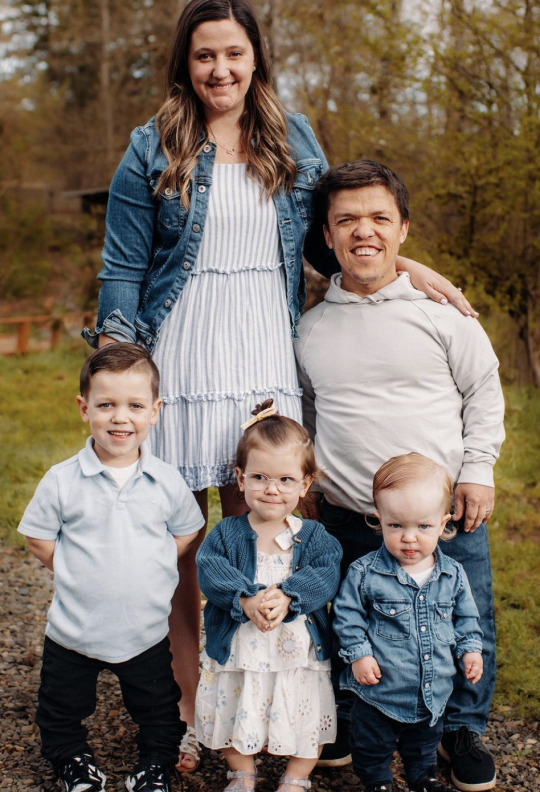
Zach married Victoria Elizabeth Patton "Tori" (May 17, 1991) on July 25, 2015. They share 3 children.
Jackson Kyle- May 12, 2017
Lilah Ray- November 19, 2019
Josiah Luke- April 30, 2022

Jeremy married Audrey Mirabella Botti on September 20, 2014. They share 4 children.
Ember Jean- September 11, 2017
Bode James- January 8, 2020
Radley Knight- November 8, 2021
Baby Girl- 2024

Molly married Joel Silvius on August 5, 2017.
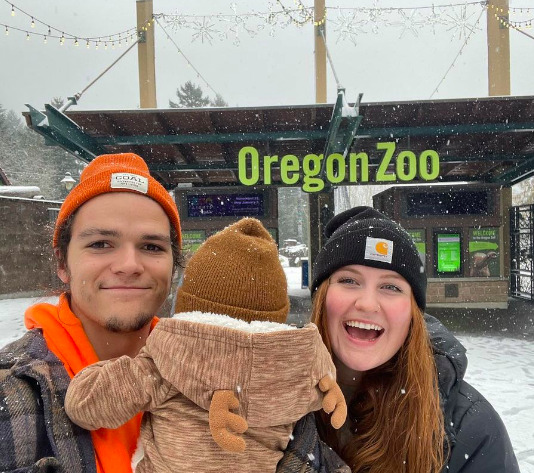
Jacob married Isabel Sofia Rock on September 7, 2019. They share a son.
Matteo Tomas- December 4, 2021
3 notes
·
View notes
Video
Advisory years (1961 - 1965) by Linh Yoshimura
Via Flickr:
August 12, 1964 - Two Douglas A-4C Skyhawk (BuNos. 149551 and 149570) of Attack Squadron 146 (VA-146) "Blue Diamonds" fly past the anti-submarine aircraft carrier USS Kearsarge (CVS-33). VA-146 was deployed as part of Carrier Air Wing 14 (CVW-14) on board the USS Constellation (CVA-64) to the Western Pacific and Vietnam from 5 May 1964 to 1 February 1965. Planes of CVW-14 took part in the August 1964 strikes against North Vietnamese PT-boat bases as a result of the Tonkin Gulf Incident. USS Kearsarge, with assigned Carrier Anti-Submarine Air Group 53 (CVSG-53), was deployed to the Western Pacific an Vietnam from 19 June to 16 December 1964.
#USS Constellation#CVA-64#USS KEARSARGE#CVS-33#A-4 Skyhawk#VA-146#US Navy#Vietnam war#Advisory years#flickr
6 notes
·
View notes